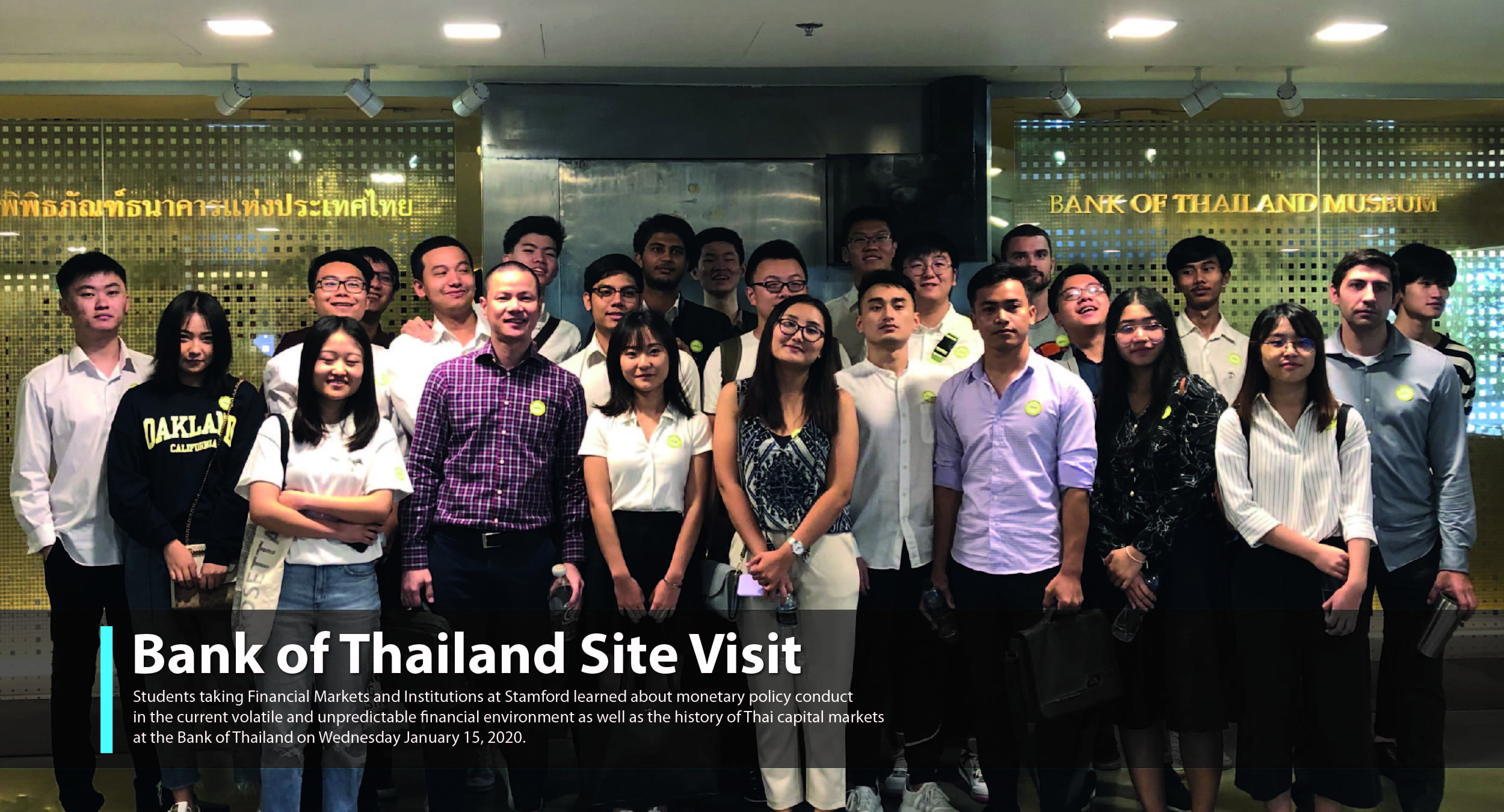
On 15 January 2020, the Department of Finance and Accounting at Stamford International University arranged a field trip for the students of the course FIN321 – Financial Markets and Institutions – to visit the Bank of Thailand Learning Centre. This is a part of STIU’s efforts to promote our students to learn from industry experts to broaden their perspectives on real-world examples and practical applications of theories and topics discussed in class.
During this trip, our students were privileged to receive a presentation by Ms. Sukjai Wongwaisiriwat, Assistant Director from the Economic and Policy Department, Monetary Policy Group. Our distinguished speaker shared with us a number of aspects surrounding the conduct of monetary policy under the inflation targeting regime and provided our students with an opportunity to ask questions and discuss about the challenges Thailand is facing from the recent strong Thai Baht.
Besides the often-discussed monetary policy tools such as interest rates and exchange rates, our students also discovered an unthought-of aspect of modern monetary policy conduct – something rather unorthodox and complementary to the usual textbook theories. In a highly globalized and fragile financial landscape in Thailand in which common monetary policy tools and the transmission mechanism may prove less effective, teams of experts at the Bank of Thailand also conduct research via the Puey Ungphakorn Institute for Economic Research (PIER) and collaborate closely with other government bodies to help address various structural issues that may affect financial stability in Thailand.
Last but not least, our students also had an opportunity to visit the Bank of Thailand Museum to learn about the history of the Thai central bank, money printing and storing process, the evolution of money used as a medium of exchange in Thailand, as well as the role of the Bank of Thailand in safeguarding the Thai financial markets and promoting economic growth.

